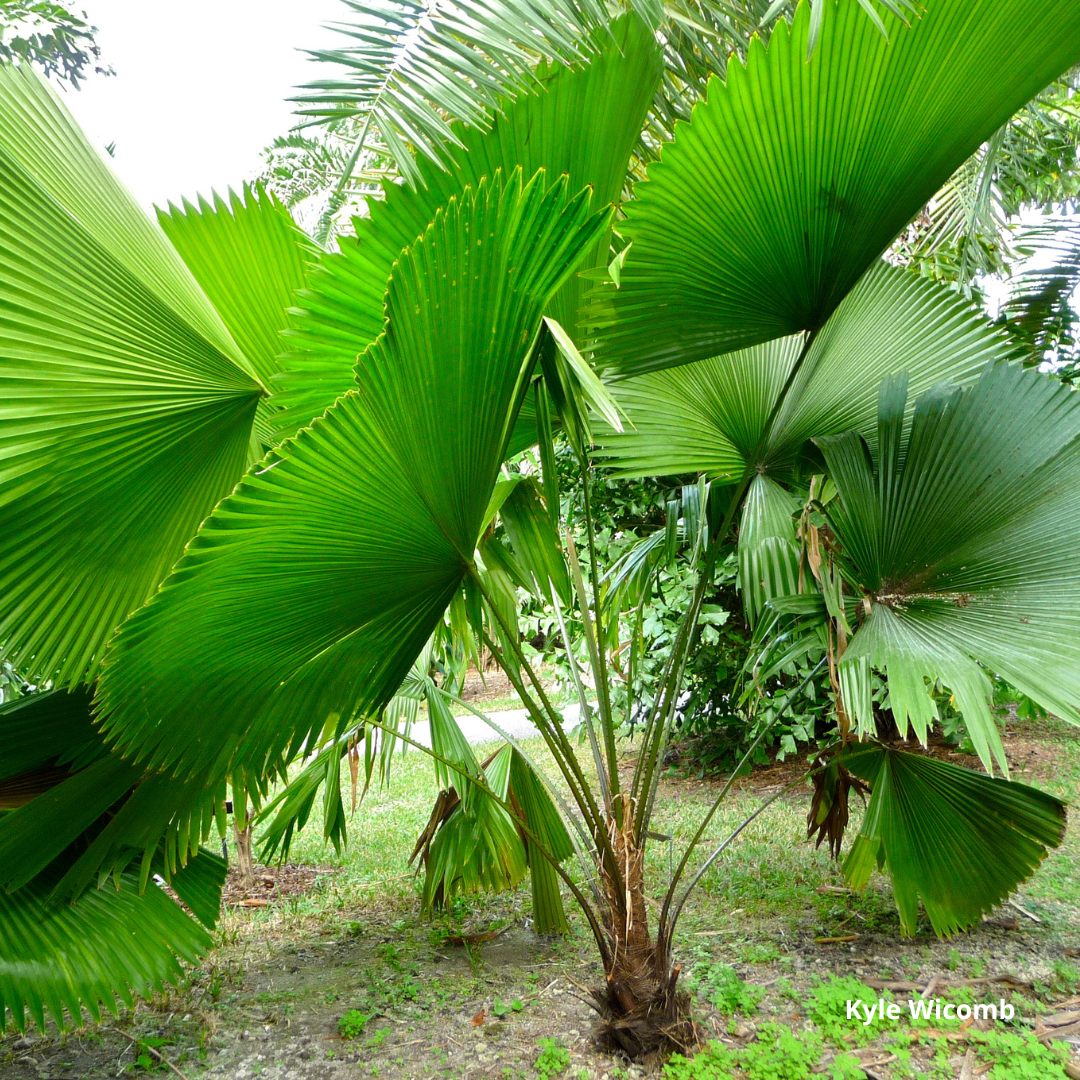VIRIAR
Licuala peltata var. sumawongii - Sumawong's Fan Palm - 5 x seeds fresh seeds
Licuala peltata var. sumawongii - Sumawong's Fan Palm - 5 x seeds fresh seeds
No se pudo cargar la disponibilidad de retiro
Plant Description
Name: Licuala peltata var. sumawongii
Common Name: Sumawong's Fan Palm
Licuala peltata var. sumawongii, commonly known as Sumawong's Fan Palm, is a distinctive and visually striking palm native to the tropical rainforests of Southeast Asia. It is a variety of Licuala peltata known for its unique fan-shaped leaves and compact growth habit, making it a popular choice for tropical and subtropical gardens as well as for indoor tropical plant enthusiasts.
The Sumawong's Fan Palm typically reaches a height of 2-4 meters (6.5-13 feet), with a slender, single trunk that is covered in leaf scars. The palm is noted for its large, fan-shaped leaves that are deeply divided into numerous segments, giving them a highly textured and ruffled appearance. The leaves can grow up to 1 meter (3 feet) in diameter and are arranged in a dense crown at the top of the trunk. The palm produces small, inconspicuous flowers, which are followed by small fruits, but the primary appeal of this palm is its striking foliage.
Cultivation of Licuala peltata var. sumawongii
Conditions:
- Light: Licuala peltata var. sumawongii thrives in bright, indirect light but can also tolerate partial shade. It prefers filtered sunlight, making it suitable for indoor cultivation near bright windows or in shaded outdoor areas. In hotter climates, it benefits from some protection from the harsh midday sun.
- Temperature: This palm prefers warm, tropical to subtropical conditions with temperatures ranging from 18-30 °C (65-86 °F). It is sensitive to frost and should be protected from temperatures below 10 °C (50 °F). It is suitable for USDA zones 10-11.
- Soil: The Sumawong's Fan Palm prefers well-draining, rich soil. A mix of peat, perlite, and compost provides good drainage and aeration. It can adapt to a range of soil types as long as they are well-draining and slightly acidic to neutral in pH.
- Water: Regular watering is important for Licuala peltata var. sumawongii. Keep the soil consistently moist but not waterlogged. Allow the top layer of soil to dry out slightly between waterings. The plant appreciates high humidity, so consider misting the leaves or placing a humidifier nearby, especially in dry indoor environments.
Planting and Care:
- Planting: For indoor cultivation, use a pot with drainage holes and a well-draining potting mix. Choose a location with bright, indirect light. When planting outdoors, select a site with well-draining soil and some protection from harsh sunlight if necessary.
- Fertilization: Feed Licuala peltata var. sumawongii with a balanced, slow-release fertilizer formulated for palms. Apply fertilizer every 6-8 weeks during the growing season (spring and summer) to support healthy growth and maintain its vibrant foliage. Avoid over-fertilizing, as this can lead to nutrient imbalances.
- Maintenance: Prune off any dead or damaged fronds to maintain the plant’s appearance and encourage new growth. The palm is relatively low-maintenance but should be monitored for pests such as spider mites and scale insects. Ensure good air circulation around the plant to minimize the risk of fungal diseases.
Growing from Seeds
- Seed Preparation: Soak the seeds of Licuala peltata var. sumawongii in warm water for 24-48 hours to help soften the seed coat and improve germination rates. Scarify the seeds by lightly sanding them if necessary.
- Sowing: Sow the seeds in a well-draining seed-starting mix. Plant the seeds about 1-2 cm (0.5-0.8 inches) deep and cover lightly with soil.
- Germination Conditions: Place the seed tray in a warm, humid environment with temperatures around 25-30 °C (77-86 °F). Keep the soil consistently moist and provide bright, indirect light. Germination can be slow and may take several weeks to a few months.
- Care for Seedlings: Once seedlings emerge, provide them with bright, indirect light and gradually acclimate them to more direct light. Transplant seedlings into larger pots or directly into the garden when they are large enough to handle.
Licuala peltata var. sumawongii is a captivating palm that adds an exotic touch to any landscape or indoor space. Its distinctive ruffled fan-shaped foliage and relatively compact size make it a prized addition for plant collectors and garden enthusiasts.












